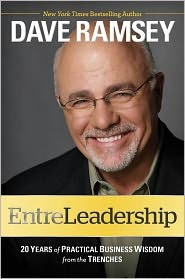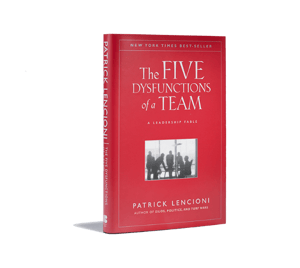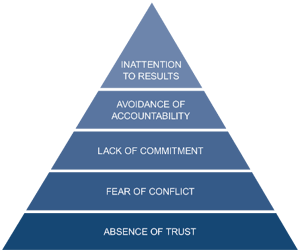+1 (317) 804-2330 | info@ballsystems.com | Blog
+1 (317) 804-2330 | info@ballsystems.com | Blog

In a strategic off-site meeting, our leadership team discussed the barriers to accelerating our business into the next decade and beyond. As a backdrop, we’ve spent tons of effort, time, and money in the past two years improving things like processes, systems, marketing, procedures, selling motions and staff, and have even successfully revamped our hiring process to get more thoroughbreds running the race. We’ve driven significant progress around core values and in many ways have changed our company’s culture into one that is genuine, transparent, communicative, and organized. We are growing organically and winning important big new projects that we’re executing on well. Overall, we are looking pretty good.
So, as the leadership team discussed our next strategic priorities, I was at first met with both surprise and some resistance when I said that I thought a lack of teamwork was our biggest challenge to accelerating our business forward. Now, one of the challenges of running a consultative custom engineering business is the ability to scale. We can certainly create systems and processes, and we can automate using technology, but at the end of the day, we are capped by the capacity of our people; our engineers. And hiring engineers is time-consuming, challenging, and expensive. So, the question of scale needs to center on the ability to eliminate friction and to improve synergy.
In his book “Entreleadership”, Dave Ramsey discusses the synergy of teams of Belgian draft horses.

“One of the largest, strongest horses in the world is the Belgian draft horse. Competitions are held to see which horse can pull the most and one Belgian can pull 8,000 pounds. The weird thing is if you put two Belgian horses in the harness who are strangers to each other, together they can pull 20,000 – 24,000 pounds. Two can pull not twice as much as one but three times as much as one. This example represents the power of synergy. However, if the two horses are raised and trained together they learn to pull and think as one. The trained, and therefore unified, pair can pull 30,000 – 32,000 pounds, almost four times as much as a single horse.”
So, the benefits of teamwork and synergy are certainly easy concepts to grasp. The real work is in creating an environment where our team members actually work together as a team. How do we not only harness two or more Belgian draft horses, or in our case engineers, together, but how do we raise and train ourselves as a unit/family and create an environment where we can truly bring out the best in each another?
For Ball Systems, we chose to use Patrick Lencioni’s “Five Dysfunctions of a Team”  as a tool to discuss and improve our company’s teamwork. In his book, Lencioni discusses five dysfunctions that can impede true teamwork, including: Absence of Trust, Fear of Conflict, Lack of Commitment, Avoidance of Accountability, and Inattention to Results. Our leadership team all individually invested time in reading his book and we then also self-facilitated a three-day off-site meeting using training materials provided by The Table Group.
as a tool to discuss and improve our company’s teamwork. In his book, Lencioni discusses five dysfunctions that can impede true teamwork, including: Absence of Trust, Fear of Conflict, Lack of Commitment, Avoidance of Accountability, and Inattention to Results. Our leadership team all individually invested time in reading his book and we then also self-facilitated a three-day off-site meeting using training materials provided by The Table Group.
As we discussed our team dynamics within the construct of the “Five Dysfunctions of a  Team” training materials, we quickly realized that the leadership team (and Andy and I as owners) were the root of much of our company’s teamwork dysfunction. As we worked through and owned our own responsibilities as they relate to teamwork, we also began to develop our own thinking regarding how to improve. For instance, I recognized that I personally have struggled in the area of Fear of Conflict. Other managers recognized and owned their individual weaknesses. We were able to lean into difficult discussions about things we had avoided for years. Trust was building.
Team” training materials, we quickly realized that the leadership team (and Andy and I as owners) were the root of much of our company’s teamwork dysfunction. As we worked through and owned our own responsibilities as they relate to teamwork, we also began to develop our own thinking regarding how to improve. For instance, I recognized that I personally have struggled in the area of Fear of Conflict. Other managers recognized and owned their individual weaknesses. We were able to lean into difficult discussions about things we had avoided for years. Trust was building.
The introspective work and acknowledgment of our own responsibilities in creating dysfunctions in our team was foundational in turning the corner. After recognizing our own baggage, we were quickly able to develop a greater sense of mutual trust, agree on how to engage in constructive conflict, how to ensure commitment around unified goals, how to drive accountability among each other and among our teams, and how to drive results.
Now, have we “arrived” as a company and as teams? Heck no! We’re still very flawed and extremely fallible. We still fail regularly. We still have a lot of training and development to do both individually and within our teams. There is quite literally a ton work to do, and that work will likely never end as we continue to grow.
But….
I can almost sense that the air is changing. While accountability has improved and some discomfort has increased as a result, I also see team members being more satisfied in knowing what is expected of them. I see people being able to trust each other in genuine ways. I see ad hoc teams coming together to attack issues and to ensure joint success despite individuals knowing they are sacrificing their own individual success. I see the extra effort. I see people holding each other accountable directly, without managers being involved. I see difficult discussions occurring in healthy conflict. I see people driving themselves and others. I see true servant attitudes. I see people enjoying each other, and I see our own team of Belgian draft horses beginning to carry more together than they ever did individually.

Ball Systems designs, develops, and delivers custom test systems and produces comprehensive build-to-print systems for companies creating or manufacturing critical electronic or electro-mechanical components for automotive, aerospace and defense and consumer appliance applications.
Blog Comments